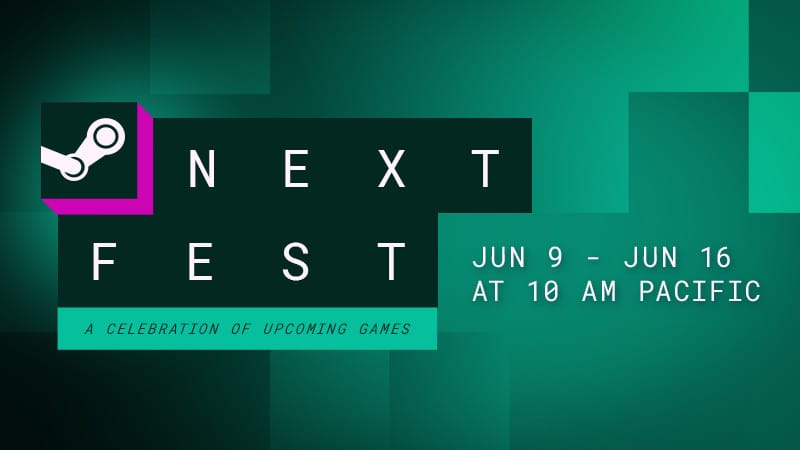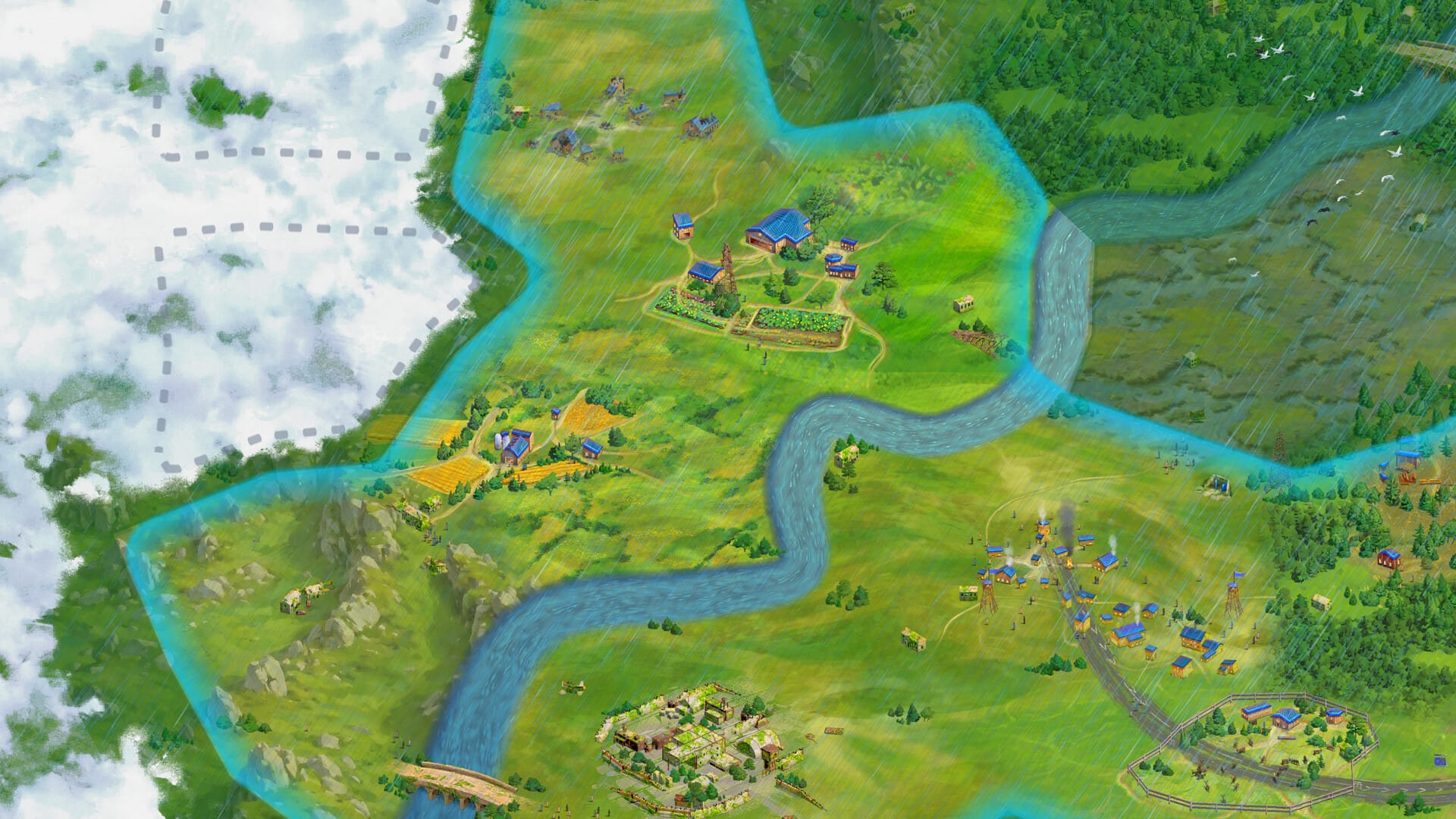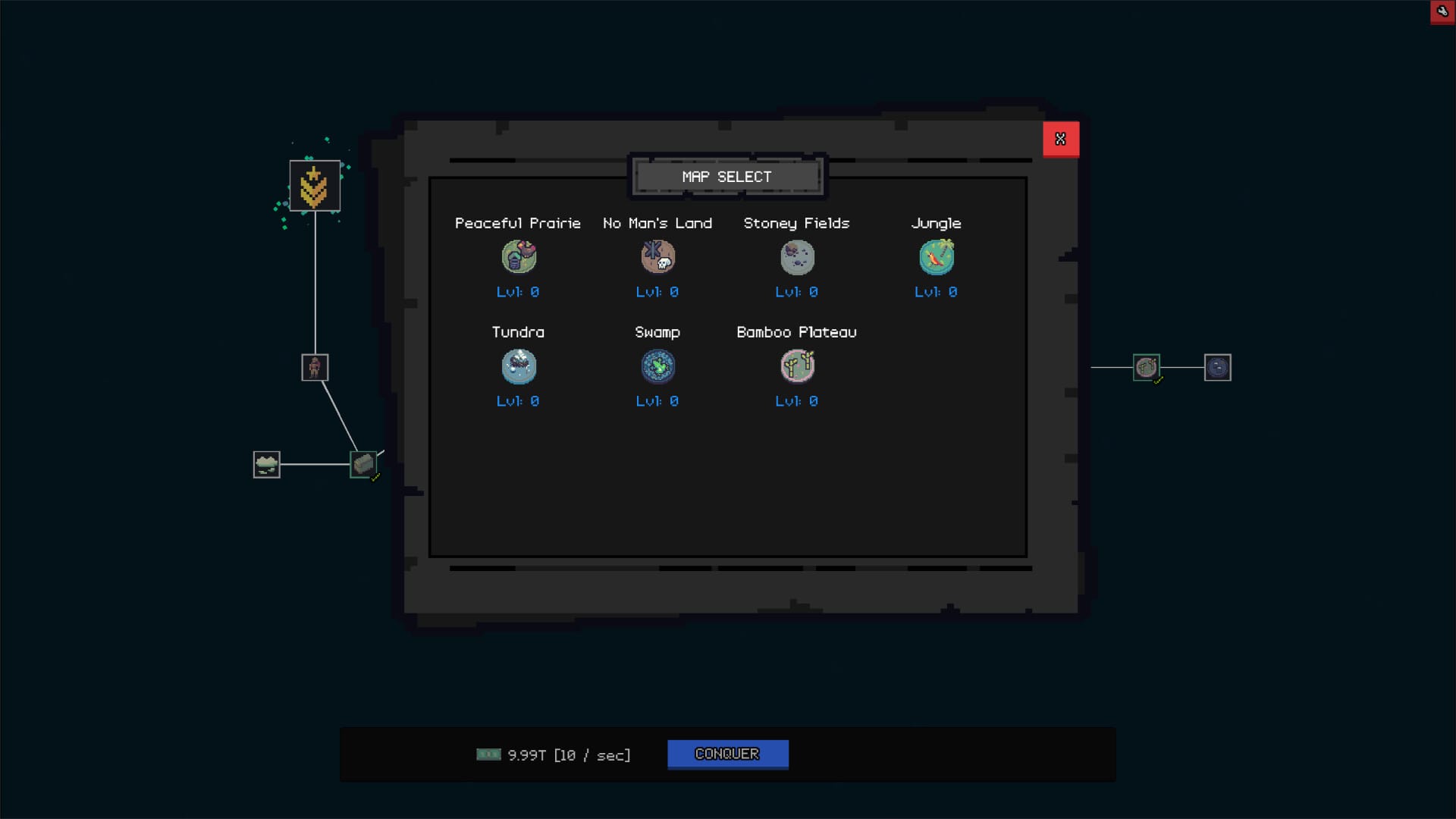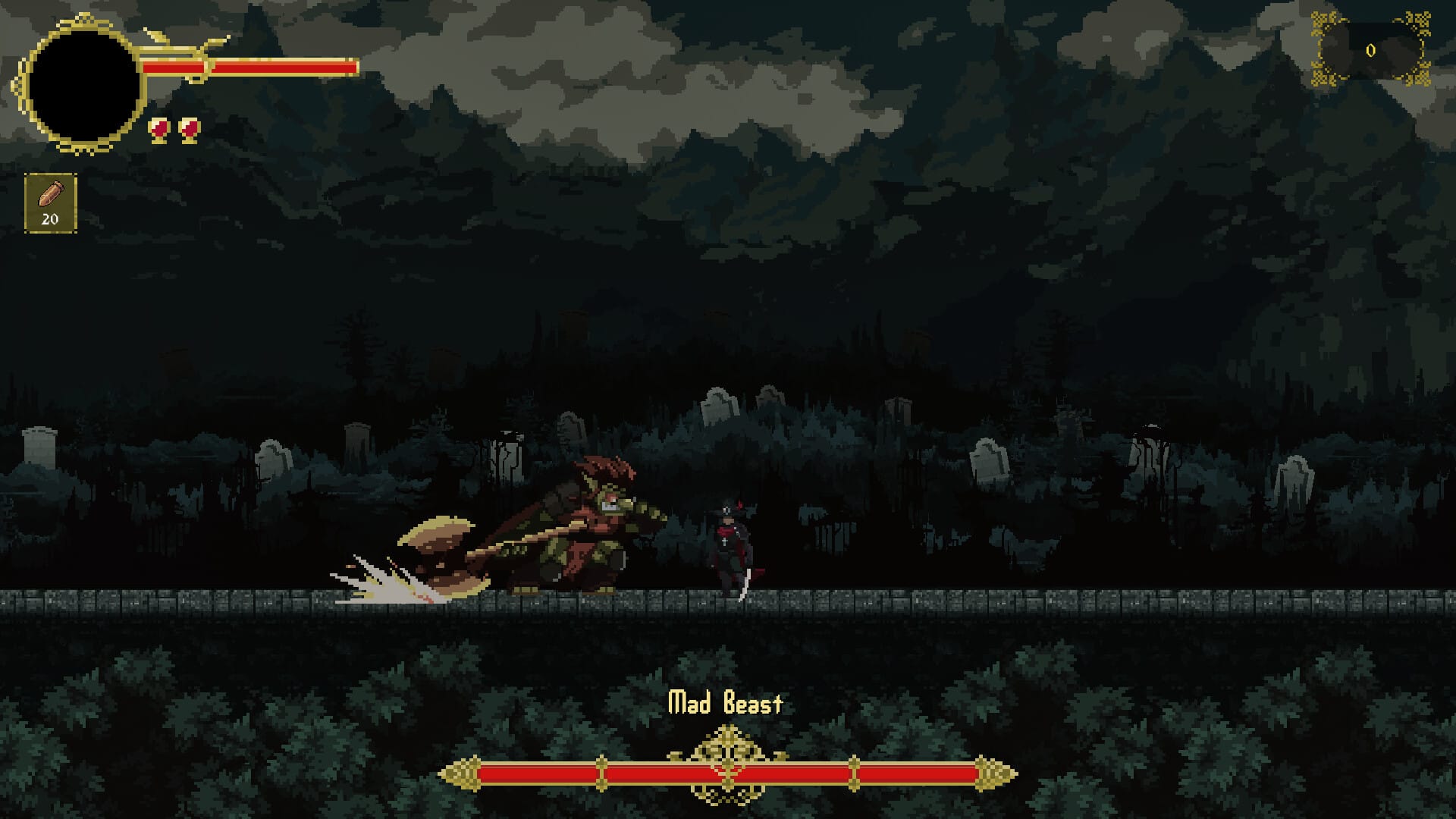A Steam Next Fest Goodie Bag, Part 1
All the latest demos that are fit to play

If you have a love for indies, Steam Next Fest is like Christmas come early. It’s a time when many small developers and upcoming games will have more eyes on their games than ever. I’m sure it’s a ton of pressure for many of these developers, but I also personally find something beautiful in it as well.
When you think about it, demos for smaller games like these have never been so readily available. It’s all promoted under the banner of Steam Next Fest, a grand showcase to the public. One must wonder what gaming history would look like if Steam Next Fest had always existed. What smaller titles fell under the radar in the past simply because not enough people knew about them? Could those games have been hits and/or popular? It’s a lot of ‘what if’, I know, but it is interesting to think about, isn’t it? And that’s the thing: it’s beautiful to me that no matter who you are as an Indie developer, you’ll have your chance in the spotlight here and now.
With that in mind, I wanted to share the demos I played and experienced during Steam Next Fest. I played quite a lot, but I am determined to speak on every single one that left me with a positive reaction and effect. Any demos that left me with a negative reaction or weren’t for me were simply omitted and won’t be mentioned at all here. I may still nitpick here and there, of course, but know that I only do so out of love for what I played.
You may have seen some of these games at Summer Games Fest as well, so they may indeed have a big publisher behind them. In those cases, I’ll make sure to specify. Steam Next Fest is an incremental time for developers, and it is far beyond my own good conscience to lambast a game from its demo alone. I've listed them in alphabetical order, not in order of preference.
After Inc: Revival

From developer Ndemic Creations, After Inc: Revival is a sequel to the virus-management game Plague Inc. That was a game you wouldn’t expect to receive a sequel at all, since it always seemed like it could be updated instead, much less the sequel being an entirely different genre. I admit I am not sure where Ndemic's other game, Rebel Inc: Escalation, factors in, if at all.
After Inc: Revival dares to ask the question: What exactly happened to the planet after the player successfully brings down the apocalypse in Plague Inc: Evolved? After Inc. is a city builder set in the same universe, so players are tasked with rebuilding from the ruins after the plague that ravaged the planet caused not just widespread pestilence, but apparently zombies as well. Humanity has emerged from underground vaults and is now attempting to start anew. It’s a really novel concept and idea to me, and from the moment it was announced, I was eager to see what the game would offer. I was not disappointed whatsoever.
It’s quite a fun time, really! After Inc: Revival really oozes with potential as a city builder. The games I’m reminded of most after playing the short demo are Ara: History Untold, believe it or not, as well as Frostpunk. While it isn’t particularly a 4X or Civilization clone like Ara, I’m reminded of it due to the large irregularly shaped splotches of territory you’ll find on the map in After Inc. Much like Ara, you’ll be claiming territory within these large swaths of land and then building improvements within them to extract resources. You’ll pick Leaders when starting your post-apocalyptic city, with each one having different passive abilities. I can see the vision and replayability this game will likely have with different leaders to choose from. Fittingly so, the developers use ‘mini 4X’ as one of their descriptors of the game on Steam. Thankfully, unlike Ara, the game is actually optimized very well, and I didn’t run into any issues with it performance-wise or on the technical front during the demo.
Unlike many city builders, After Inc: Revival has victory conditions. To win a match, you’ll need to complete a set of 10 objectives while building your city, ranging from hitting a population goal to maintaining morale above a certain threshold. The game never felt like a prolonged experience or time sink during my time playing it. If you’re looking for a city builder to sit down and have prolonged hours with as you incrementally build a large city, this isn’t quite going to fill that itch. Instead, this has smaller levels with specific goals to complete before moving on to the next. After each level, you’ll unlock a card you can use to enhance your gameplay. These cards can be a passive bonus, a new Leader, or a number of other things. After Inc: Revival really spells out the goals you need to chase through building your city, and I kinda appreciate that. One thing that I particularly find myself critiquing about the city builder genre is that I often find myself aimlessly building stuff or overbuilding and derailing my playthrough as a result. It’s nice to have objectives to keep me in check, so to speak.

It’s honestly quite refreshing to have a city builder that feels more snappy to play. It’s really something that feels like it’ll respect your time compared to others in the genre. This is why I feel like After Inc: Revival has a chance to really feel unique within the genre. Ndemic knows how to make these games that feel like they take strategy, but also feel like they aren’t going to rob you of too much time per playthrough. The time that gets robbed is when you inevitably get addicted to it, and I can absolutely see that happening with After Inc: Revival as well.
I mentioned Frostpunk before, and while the core gameplay of managing your city feels similar to that frozen-world game, it’s not quite as micro-management heavy-feeling, which is a compliment in my eyes, working to the game’s benefit. You’ll manage morale and resources just like Frostpunk, though you need not worry about temperature in this one. The addition of random events (another Frostpunk trait) that can affect morale or loyalty is also fantastic, adding variance to the experience. It may seem like I’m critiquing Frostpunk, but I think it’s one of the more unique city builders out there, so I believe After Inc. does well to take cues from it. It even seems like there will be some form of narrative in the full release, which I’m eager to experience.
Side note: Wouldn’t it be really cool if you could import a save from Plague Inc. and have the narrative refer to the virus you created in that game at some point? I do think being more simple is definitely to After Inc’s benefit as a city builder, but I feel like there’s a little room for just a tad more depth to the mechanics. I won’t harp on that, though, because it seems like zombie defense may play a role in the full game, so I suppose we’ll see. Nonetheless, I believe there’s high potential for the game to be just as fun as Plague Inc: Evolved, and I absolutely cannot wait to get my hands on it. It's already out via Steam’s Early Access program so you don't need to wait!
Click and Conquer

This was a wonderful little surprise of a game. Some people may roll their eyes at idle clicker games, but hear me out: Picture an idle clicker with a bit more interactivity than you’d expect of games in that genre. When you load up Click and Conquer, you’re met with absolutely no instructions at all. There’s no tutorial or tooltips to tell you what to do here. I don’t always love it when games go that route, but I think it really works in this instance. The player will begin to discover things about the game simply by trying them out, and it won't take long to pick up what Click and Conquer has to offer.
One of the things you’ll notice early on is a “Conquer” button and a “Research” button. When you click the “Conquer” button and select an area, you’ll be placed into a gameplay sequence that is essentially Minesweeper, except you’re looking to bomb soldiers in a tile grid of snow. You’ll earn XP for each soldier you find and defeat, with the points going towards leveling up the area you selected. Each time an area levels up, you’ll earn a permanent incremental percentage boost to the money you earn each second.
That cash-per-second can then be spent on purchasing upgrades on the “Research” tab. These upgrades have a wide variety of passive bonuses to improve your cash flow or effectiveness at the minigame. Some increase the cash you earn per second, while others make your bombs more effective. More upgrades will appear as you progress and unlock new areas, with each one unlocking a new branch of the upgrade tree when they’re purchased.

The key here is to earn or find… scripts? Papers? Research? It’s not quite clear what this icon of a paper with squiggly writing on it is supposed to depict, since it’s not named anywhere in the game. Any tooltips this icon appears in don’t name it either, and simply use the icon. Regardless of what they are, in exchange for sacrificing your progress, you’ll be able to purchase some powerful passive permanent upgrades by spending these pages.
It all really feels synergetic as an idle clicker, folding and weaving within itself in a well-crafted loop. It doesn’t feel like an idle clicker in the usual sense because it does require some semblance of attention. You need to do these Minesweeper-like minigames enough to keep your cash flow steady, but it feels as if you'll eventually be able to leave the game idle. It feels polished, the UI is great, and it seems like a game that is ready to go already. Click and Conquer is made with Godot, I’ll also mention, and it’s really wonderful to see more games using that engine.
Little did I know while playing it that Click and Conquer releases quite soon, on June 25th. It makes perfect sense now as to why it’s so polished. I was actually reluctant to stop playing this game, and it took me a fair bit to reach something in the demo that said “available in the full game”. Developer Sockhouse Studios has created an oddly relaxing game too, which seems quite intentional based on the Steam description. I’d highly recommend giving Click and Conquer a shot if you want an idle game that asks its players to be a little more proactive than usual. I suppose if you love Minesweeper, you’ll pop some champagne over this, too, for your early Windows days were not forgotten.
Gravethorn

Public service announcement to the folks at Sony: while the incredibly popular Bloodborne IP remains frustratingly dormant, inevitably, you’ll start to see others attempt to make their own spins upon it. I for one absolutely adore the Gothic aesthetic, so I’m pretty easy when it comes to games that utilize it. I’ll really want to love your game if it is Gothic, but not quite horror either. In that vein, indie developer Volviir brings us Gravethorn, an attempt to take much of Bloodborne’s energy and portray it in a side-scrolling format, much like Blasphemous does with Dark Souls. While labeling Gravethorn as merely being “Blasphemous x Bloodborne” may seem derivative or diminishing, it’s actually quite apt, and I mean it as a genuine compliment, since both of those are fantastically acclaimed titles.
Gravethorn is honestly impressive at how well it captures Bloodborne’s energy in a classic side-scroller format, which us clear almost immediately upon firing up the game. You get an immediate thought bubble in your head that goes, “Yep, this is Bloodborne-inspired.” It drops you right in, showing you the ropes in a brief tutorial before tossing you immediately into a boss encounter.
I find the implementation of the flintlock pistol and bullet mechanic to be very well done, adding a layer of variance to the gameplay that differentiates it from Blasphemous. It adds a reminder in the back of your head to ensure you conserve your bullets for when they’re truly needed. I’m surprised other action games don’t do this as often, but I suppose not many games have a flintlock pistol in the first place. Sure, firing a shot can help stun an enemy and feels satisfying to use, but you’ll need to manage your shots strategically due to their scarcity in Gravethorn. Can you tell I’m a big fan of flintlocks and I can’t help gushing over them?
Gravethorn also mixes the Blasphemous gameplay and Bloodborne aesthetic with Metroidvania elements. As you explore the world, more areas will be added to your map. I appreciate the addition of notes to the map, which appear whenever you learn information in one of those areas. I don't hate getting lost in games but I will sometimes forgets certain specific things, so the note feature will definitely aid a person like me. Some players may prefer not to see those notes, however, so perhaps an option to turn them off would be nice. Nonetheless, it keeps the game’s vague tone in place without blatantly throwing a quest log at you.

I do have a few nits to pick, however. I was quite put off by the voice acting throughout the demo. The NPCs in this game are very similar to those in FromSoft games, where everyone sounds riddled with despair (or discontent at best). I realize that's a personal choice that not everyone shares, but those characters aren't even portrayed well. I know critiquing the voice acting isn’t entirely fair, considering the budget of the typical indie game, but I cannot shake how noticeably subpar the voicework actually is, and it taints an otherwise stellar game with heaps of potential.
I also had a minor control-related issue in my time with the demo. I played the demo with a PlayStation 5 controller, and due to the crouch button being assigned to down on the left stick, I was constantly crouching when I didn't mean to, sometimes frustratingly at inopportune times. There was no option for remapping the controls either, which I hope is included in the full release. While using the D-pad mitigated the issue, it was clear the game intended players to use the left stick for movement as the on-screen prompts shown during the tutorial indicate.
These issues aside, I have a really great feeling about Gravethorn. It has a lot going for it in terms of gameplay appeal and visual style, which I believe will resonate with the many players who share my love for this aesthetic. It’s a game I’d recommend Bloodborne, Blasphemous, and Metroidvania fans keep an eye on.
We're just getting started with our Steam Next Fest demo impressions, so JUMP back in tomorrow for Part 2, when we'll have our thoughts on three more games we loved. See you then!
